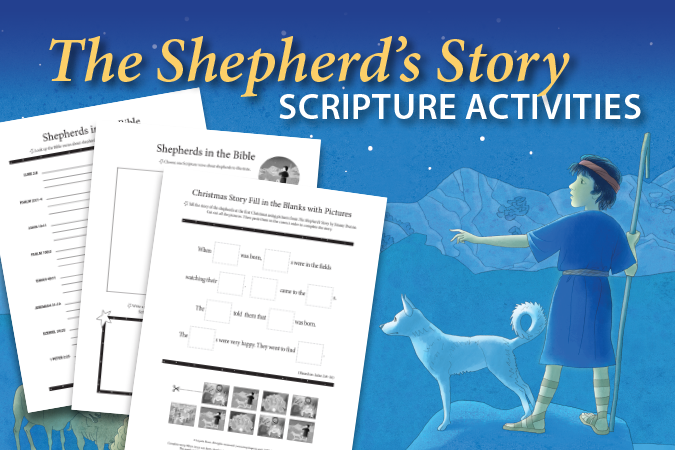
It can be difficult to see Christ in the way most families celebrate Christmas. Weeks of seeing Santa everywhere, festive decorations, and parties are followed by just a single day of feasting and opening presents. Christmas seems to end as soon as it started. Christmas trees and Christmas music disappear as people rush to post-holiday sales. Even though God became one of us and shared completely in our humanity, we often act as if that changed nothing.
Advent helps children explore not just the full story of Chistmastime—the season between Christmas Eve and the Baptism of the Lord—but the meaning of the Incarnation as well. Since we Catholics pray the things we believe at liturgy, it’s easy to discover what Jesus’ Incarnation means by exploring the prayers of the Nativity of Our Lord (Christmas) and the Epiphany in the Roman Missal.
Along with familiar, traditional activities that help children learn the story and characters of the Nativity, catechists should use art projects, discussions, journals, and role-playing to help students learn the deeper spiritual focus of Christmas that we pray at Mass.
- Jesus redeemed us from the effects of sin. Review the story of Adam and Eve and the promise that the son of a woman will crush the serpent’s head. (Genesis 3:15) Help children understand that Jesus, the son of Mary, came and restored the relationship between humanity and God that was damaged by the sin of Adam and Eve.
- Jesus shared our human nature so he could uplift its value. While they make nativity pictures or models, have children reflect on why God became a helpless baby, had human relationships, and experienced everything we experience—love, grief, pain, and even death itself. This tells us that it’s good to be human; we look to Jesus as our model to be fully human by obeying the Father’s will.
- Jesus wants us to love God the Father and heavenly things. Activities should remind children of what is truly important—namely, love of God and love of neighbor—and point out the negative effects of materialism. Christmas is about love, not presents.
- The greatest Christmas gift is God’s presence among us. The Incarnation reminds us that God desires to be with us. Include activities that express gratitude, not only for God’s love and presence, but for the people in the children’s lives. Remind students that the word eucharist means “thanksgiving.”
- Jesus’ Incarnation and ministry is a model for our mission to shape the world in the image of God’s kingdom. We are called to share his presence known through works of mercy, charity, and service. Have students name ways they can be Christ’s helpers on earth. Use these words of St. Teresa of Ávila as a prayer: “Christ has no hands but yours.”
By fostering a Christmas spirituality rooted in the Incarnation, we will remind our students—and ourselves—of the true reason for the season.
How might you develop a Christmas season spirituality in your classroom?





Be the first to comment